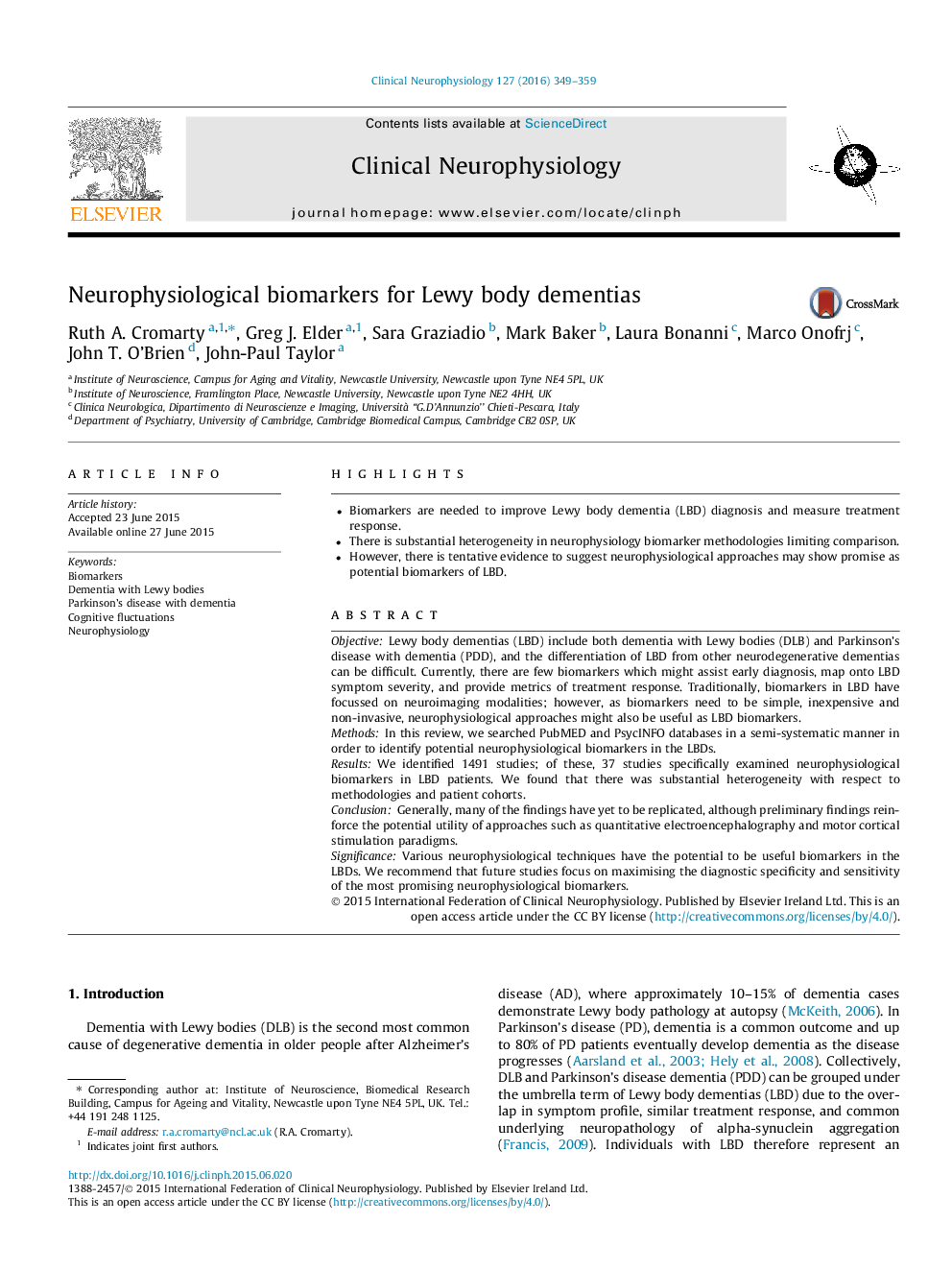| Article ID | Journal | Published Year | Pages | File Type |
|---|---|---|---|---|
| 6007885 | Clinical Neurophysiology | 2016 | 11 Pages |
â¢Biomarkers are needed to improve Lewy body dementia (LBD) diagnosis and measure treatment response.â¢There is substantial heterogeneity in neurophysiology biomarker methodologies limiting comparison.â¢However, there is tentative evidence to suggest neurophysiological approaches may show promise as potential biomarkers of LBD.
ObjectiveLewy body dementias (LBD) include both dementia with Lewy bodies (DLB) and Parkinson's disease with dementia (PDD), and the differentiation of LBD from other neurodegenerative dementias can be difficult. Currently, there are few biomarkers which might assist early diagnosis, map onto LBD symptom severity, and provide metrics of treatment response. Traditionally, biomarkers in LBD have focussed on neuroimaging modalities; however, as biomarkers need to be simple, inexpensive and non-invasive, neurophysiological approaches might also be useful as LBD biomarkers.MethodsIn this review, we searched PubMED and PsycINFO databases in a semi-systematic manner in order to identify potential neurophysiological biomarkers in the LBDs.ResultsWe identified 1491 studies; of these, 37 studies specifically examined neurophysiological biomarkers in LBD patients. We found that there was substantial heterogeneity with respect to methodologies and patient cohorts.ConclusionGenerally, many of the findings have yet to be replicated, although preliminary findings reinforce the potential utility of approaches such as quantitative electroencephalography and motor cortical stimulation paradigms.SignificanceVarious neurophysiological techniques have the potential to be useful biomarkers in the LBDs. We recommend that future studies focus on maximising the diagnostic specificity and sensitivity of the most promising neurophysiological biomarkers.
